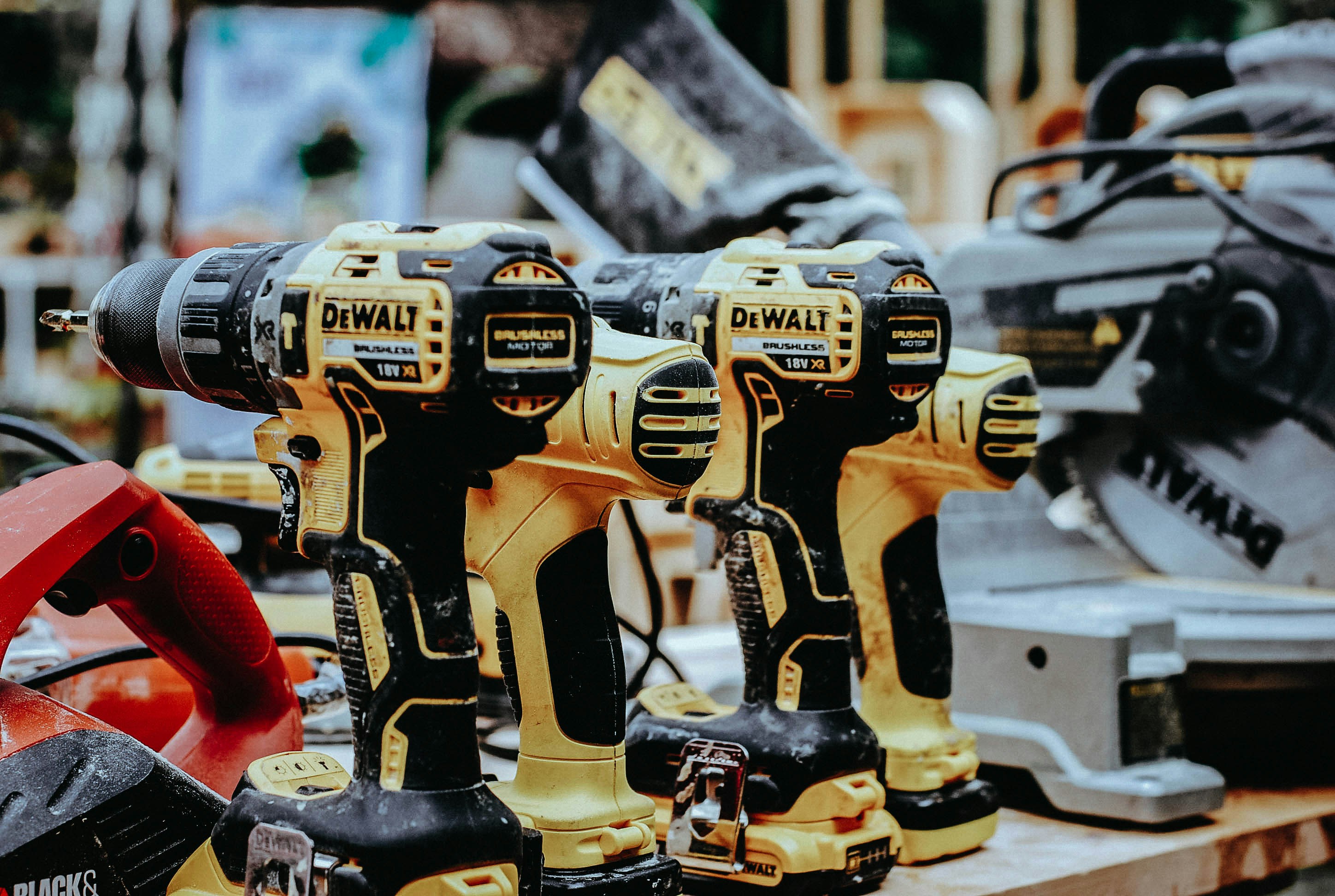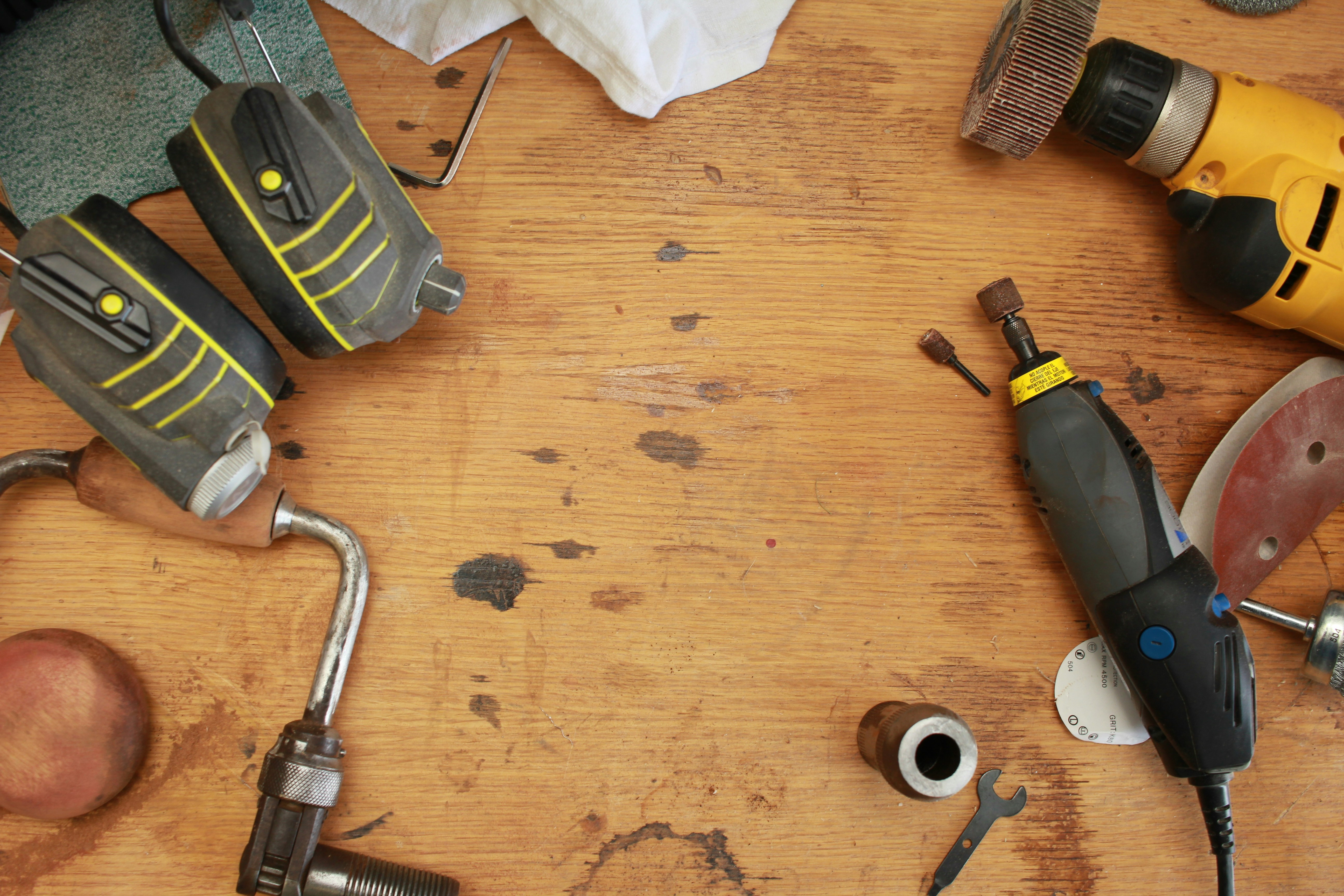Welcome to the “Ultimate Guide to Power Tools”! In this article, you will find a comprehensive overview of the different types of power tools available for all your DIY and home improvement needs. From drills and saws to sanders and grinders, we’ll cover the basics of each tool and provide tips on how to use them safely and effectively. Whether you’re a seasoned pro or a beginner looking to expand your toolkit, this guide has everything you need to know about power tools. Happy building! Have you ever found yourself in need of power tools but felt overwhelmed by the options available? Fear not, because this Ultimate Guide to Power Tools will help you navigate the world of power tools with ease. From drills to saws to sanders, we’ve got you covered with everything you need to know about these essential tools. Let’s dive in and discover the power tools that will make your DIY projects a breeze.
This image is property of images.unsplash.com.
Introduction to Power Tools
Hey there! So you’re interested in power tools, huh? Well, you’ve come to the right place. Power tools are essential for any DIY enthusiast or professional tradesperson, and they come in all shapes and sizes. In this guide, we’ll break down the different types of power tools available, how they work, and what projects they’re best suited for. By the end of this article, you’ll be a power tool pro!
What are Power Tools?
If you’re new to the world of power tools, you might be wondering what exactly they are. Simply put, power tools are tools that are powered by electricity, batteries, or compressed air. These tools are designed to make tasks easier, faster, and more efficient than using manual tools. From drilling holes to cutting through thick materials, power tools are a game-changer for any DIY project or construction job.
Types of Power Tools
Now that you understand the basics of power tools, let’s dive into the different types of power tools available on the market. From handheld tools to stationary machines, there’s a power tool for every task you can imagine. Let’s explore the most common types of power tools and what they’re used for.
Handheld Power Tools
Handheld power tools are the most versatile and commonly used power tools. These tools are designed to be held in your hands and can be easily moved around to tackle a variety of tasks. From drilling to cutting to sanding, handheld power tools are essential for any DIY enthusiast or tradesperson. Some common handheld power tools include:
-
Drills: Drills are used to create holes in various materials, such as wood, metal, or plastic. There are different types of drills, including corded drills, cordless drills, hammer drills, and impact drills.
-
Saws: Saws are used for cutting through materials like wood, metal, or plastic. Some common types of saws include circular saws, jigsaws, reciprocating saws, and miter saws.
-
Sanders: Sanders are used to smooth out rough surfaces or remove old paint or varnish. Some common types of sanders include belt sanders, orbital sanders, and random orbital sanders.
-
Grinders: Grinders are used for grinding, cutting, and polishing metal and other materials. Angle grinders and bench grinders are two common types of grinders.
Stationary Power Tools
Stationary power tools are larger, heavier machines that are meant to stay in one place while you work. These tools are typically used in woodworking shops, metalworking facilities, or other industrial settings. Stationary power tools are more powerful and have larger work surfaces than handheld tools. Some common types of stationary power tools include:
-
Table Saw: A table saw is used for making straight cuts in large pieces of wood. It consists of a circular blade mounted on an arbor, driven by an electric motor.
-
Band Saw: A band saw is used for cutting irregular shapes or curved lines in wood, metal, or other materials. It consists of a continuous band of toothed metal stretched between two or more wheels.
-
Jointer: A jointer is used to create a flat surface on the edge of a piece of wood before joining it with another piece. It consists of a cutter head that removes material as the wood passes over it.
-
Planer: A planer is used to shave off thin layers of wood to create a smooth, flat surface. It can be used to flatten boards or reduce the thickness of a piece of wood.
Pneumatic Power Tools
Pneumatic power tools, also known as air tools, are powered by compressed air from an air compressor. These tools are popular in construction, automotive repair, and other industries where electricity may not be readily available. Pneumatic tools are lightweight, powerful, and durable, making them ideal for heavy-duty tasks. Some common types of pneumatic power tools include:
-
Impact Wrench: An impact wrench is used for tightening or loosening nuts and bolts. It delivers high torque output with minimal effort from the user.
-
Air Hammer: An air hammer is used for cutting, chiseling, or shaping metal or other materials. It uses a rapid back-and-forth motion to deliver powerful blows.
-
Air Ratchet: An air ratchet is used for quickly tightening or loosening nuts and bolts in tight spaces. It operates in a ratcheting motion, making it faster and more efficient than a manual ratchet.
Choosing the Right Power Tool
With so many types of power tools available, it can be overwhelming to choose the right tool for your project. Here are some key factors to consider when selecting a power tool:
-
Task: Identify the specific task you need the power tool for. Whether you’re drilling holes, cutting wood, or sanding surfaces, choose a tool that is designed for that task.
-
Power Source: Consider whether you need a corded tool for continuous power or a cordless tool for portability. Battery-powered tools are convenient but may have limited run time.
-
Features: Look for additional features that can make your job easier, such as variable speed settings, ergonomic grips, LED lights, or dust collection systems.
-
Brand: Choose a reputable brand with a history of quality and reliability. Read reviews, compare prices, and consider warranties when selecting a power tool.
Safety Tips for Using Power Tools
Safety should always be your top priority when using power tools. These tools can be dangerous if not used properly, so follow these safety tips to protect yourself and others while working with power tools:
-
Read the Manual: Always read the manufacturer’s instructions and safety guidelines before using a power tool. Familiarize yourself with the tool’s features, functions, and potential hazards.
-
Wear Personal Protective Equipment: Wear safety goggles, ear protection, gloves, and a dust mask when using power tools. Protect your eyes, ears, hands, and lungs from flying debris, loud noises, and harmful dust.
-
Use Clamps and Guards: Secure your workpiece with clamps or a vice to prevent it from moving while you work. Keep guards, shields, and safety mechanisms in place to protect yourself from accidental contact with blades or moving parts.
-
Keep Work Area Clean: Maintain a clean, clutter-free work area to avoid tripping hazards or accidents. Keep tools, cords, and materials organized and within reach to avoid reaching or stretching while operating a power tool.
This image is property of images.unsplash.com.
Maintenance and Care for Power Tools
To ensure your power tools perform at their best and last for years to come, it’s important to maintain and care for them properly. Follow these maintenance tips to keep your power tools in top condition:
-
Regular Cleaning: Keep your power tools clean and free of dust, debris, or buildup that can affect performance. Use a soft brush, compressed air, or a vacuum to remove dirt from vents, motors, and moving parts.
-
Lubrication: Apply lubricant to moving parts, gears, and bearings to reduce friction and prevent wear. Check the manufacturer’s recommendations for the type of lubricant to use and how often to apply it.
-
Check for Wear and Damage: Regularly inspect your power tools for signs of wear, damage, or malfunction. Replace worn-out parts, blades, or accessories to maintain optimal performance and safety.
-
Store Properly: Store your power tools in a clean, dry, and well-ventilated area to prevent rust, corrosion, or damage. Keep tools in their cases or on shelves to protect them from dust, moisture, or accidental damage.
Conclusion
Congratulations! You’ve made it to the end of the Ultimate Guide to Power Tools. You now have a solid understanding of the different types of power tools, how to choose the right tool for your project, safety tips for using power tools, and maintenance tips to keep your tools in top condition. Armed with this knowledge, you’re ready to tackle any DIY project or construction job with confidence. Remember to always prioritize safety, read the manual, and take good care of your power tools. Happy tooling!

This image is property of images.unsplash.com.


